
Recurring drought is a natural part of the climate in many areas of Canada and creates a challenge when managing grazing and forage resources. Although droughts are often unpredictable, they are inevitable in many regions, so long-term farm and ranch management must include planning for and consideration of how drought will affect the entire system – including plants, livestock and water sources.
Drought-Related Resources for Cattle Producers available on BeefResearch.ca
Experiencing Drought Stress? Ask the Experts: Webinar Recording and Summary
| Key Points |
|---|
| Best practices such as rotational grazing and litter (plant residue) are even more valuable during drought |
| When managing through a drought consider combining groups of animals to encourage grazing of less desirable plants, and grazing pastures with species that are more tolerant of increased grazing pressure (like crested wheatgrass) |
| Extended rest periods and increased recovery times are necessary to protect plants during dry periods |
| Feed testing and water testing are especially important during times of drought |
| Drought plans should identify the group or class of livestock to be de-stocked first if necessary and at what point each group will be removed if the drought persists |
| It is important to monitor for toxic or poisonous plants, which are more likely to be grazed during dry years |
| Drought management strategies should be a permanent part of every grazing plan |
Managing Through a Drought
Existing Forage Resources
Taking stock of forages is an important first step in making a plan for drought. Knowing what you have for pasture, harvestable forages (or salvaged crops), and grains is the first step to determining if it is necessary to make the decision of buying feed or culling cattle.
When a drought happens, the benefits of a rotational grazing system will be particularly evident as plants need more time to recover when its dry. As grazed plants slow their growth, their ability to restore their root systems slows as well. During a drought, grazing plans should be flexible enough to extend periods of rest when possible.
One grazing strategy to consider during a drought is combining groups of animals. This will concentrate more animals in a single herd which decreases the number of paddocks/pastures being used at any one time. The result will be extended rest periods for the paddocks that the animals have been removed from. By combining herds, stock density will also be increased, which results in less selectivity by individual animals and more uniform grazing. As selectivity is reduced, animals will consume less-preferred plants. This leads to a greater variety of plant types being consumed as compared to more typical grazing behaviour. As animals consume the less-preferred plants, grazing pressure on the more desirable plants is reduced. Less severe grazing and increased recovery time protects more desirable plants from overuse during the dry period. It is always important to remember that grazing management decisions must continue to balance overall animal demand with total forage supply, including appropriate levels of utilization, and that timing of grazing and frequency must provide adequate rest and recovery.
As much as possible, management should be focused on leaving litter (plant residue) behind to provide shade and insulation to the soil surface, reducing soil temperatures and minimizing moisture loss through evaporation. When moisture is scarce, forage stands with adequate litter reserves will produce more forage than those with less litter1. Litter is also critical when rain does occur in order to catch rain drops and prevent moisture loss through runoff, evaporation, and erosion.
Management should be focused on leaving litter (plant residue) behind to provide shade and insulation to the soil surface, reducing soil temperatures and minimizing moisture loss through evaporation.
Forage quality is affected by changes in temperature, light and water availability that occur during a drought. The effect of drought on quality parameters including crude protein, fibre and digestibility is variable, and any improvements may be offset by decreased yields. Nutrients such as vitamin A which is found in green leafy plants can also be limited in drought times. Unpredictable conditions and the varying effect on different plant species highlights the need for constant monitoring of forage quality and the importance of feed testing.
Intentionally grazing pastures with specific plant species that are more tolerant of increased grazing pressure is a wise management choice during drought. For example, crested wheatgrass pastures, if available, may be selected to be grazed earlier in the season and for longer periods than normal as this species is more tolerant of grazing pressure than many other forage sources. This will allow for reduced or deferred pressure on more grazing-sensitive plants.
In response to drought conditions, producers may need to consider ways to increase total forage supply in order to balance with animal demand. This may include seeding annual forages, making use of crops originally intended for grain production, renting additional pasture land, purchasing feed to supplement on pasture or feeding animals in pens. All options must be weighed against economic considerations.
Accessing Additional Forage – Crops and Alternative Feeds
Seeding annuals as an emergency source of forage to supplement perennial pastures may be an option during periods of drought. Spring-seeded winter annuals will remain vegetative throughout the summer and will respond with growth to any rain showers that do occur. Cereals can be grazed approximately four to six weeks after seeding and can be stocked heavily to use all available growth. If utilizing cereals during a drought be sure to feed test. Nitrate accumulation can be an issue in drought stressed cereals, so make sure to include testing for nitrates with your feed test. It is important to choose a test that supplies you with the actual nitrate amount rather than a “yes/no” answer as this can help you manage feeds going forward.
Cattle may also graze failed hay and annual crops. If possible, graze grass hayland rather than legume forage stands as legumes will provide much better regrowth potential than grasses if rains do return. Greenfeed can be cut from cereal crops that were intended for harvest as grain. When salvaging cereal crops normally intended for grain for livestock feed, potential residue from chemical use must be a consideration. Additionally, making use of any available stubble fields after harvest will relieve grazing pressure on other pastures and provide an additional forage source.
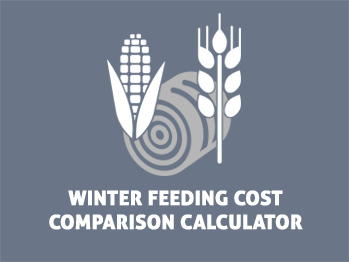
Sitting down and working through a risk analysis will be time well spent. Each operation, set of circumstances, and year, is unique so there is no ‘one size fits all’ list of options that will work in all situations. Identify all possible options, consider the pros and cons of each potential decision including the costs and returns of each. For example, if the decision is made to graze an annual crop that was intended for feed production, what is the alternate source of winter feed? What will be the cost if feed has to be purchased? Working through all possible scenarios and the resulting outcomes, both positive and negative, will help to determine the best, or least negative and risky, action to take.
In all cases, it is important to remember what might seem obvious – a cow’s nutritional requirements don’t change when forage is limited by dry conditions. Feed testing becomes even more critical during periods of shortages or when using new or alternative feed sources.
Supplemental Feeding
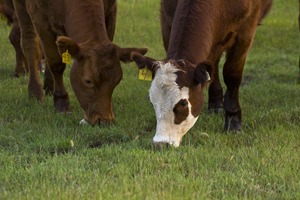
Supplemental feed on pasture can be used to augment low quality or limited forage. This will mean moving animals onto a “sacrifice” pasture. Livestock will typically preferentially keep grazing, continuing to defoliate and weaken plants rather than accepting the supplemental feed on offer. However, grazing pressure on forage species which are comparably more grazing tolerant, such as meadow bromegrass or orchardgrass, may be a preferred option, allowing other areas to rest and recover.
Creep feeding is the practice of providing supplemental feed to calves before weaning, helping to supplement any shortfall in nutrients due to reduced milk production by the cow and limited forage resources. The advantages of providing creep feed are dependent on a number of factors and results are often variable, particularly from an economic standpoint. However, when resources are limited by drought, creep feeding may be an option to ensure that adequate nutrition is supplied to calves while reducing demand on cows and pastures. See the BCRC post, ‘Is Creep Feeding an Answer to your Pasture Woes?’ for more information.
Alternative feeds not normally utilized can help reduce feed costs or stretch supplies but it’s important to consider the nutritional quality of feeds that are available and become aware of any potential health risks. Feed testing is always important but particularly when using new feed sources. For example, brassica crops such as canola and mustard are sometimes harvested as hay or silage if forage and feed supplies are limited by drought. However, precautions must be taken as canola contains high levels of sulphur (0.5 to 1.3 percent on a dry matter basis) which exceeds the recommendation that total dietary sulphur for beef cattle not exceed 0.4 per cent on a dry matter basis2. If proper feed inclusion levels are not followed animal health challenges, such as haemolytic anaemia and sulphur-induced polioencephalomalacia (PEM), and nutritional issues, including inhibited utilization of copper and selenium, could occur. It is important to remember to look at all the feed and water sources your animals are consuming as these can compound. A salvaged crop may be within the allowable limits but if the water is also high in sulfates this can add up to an unforeseen problem. Read more about other alternative feed options in the BCRC post, Alternative Feeds: Soybean Straw and Kochia.
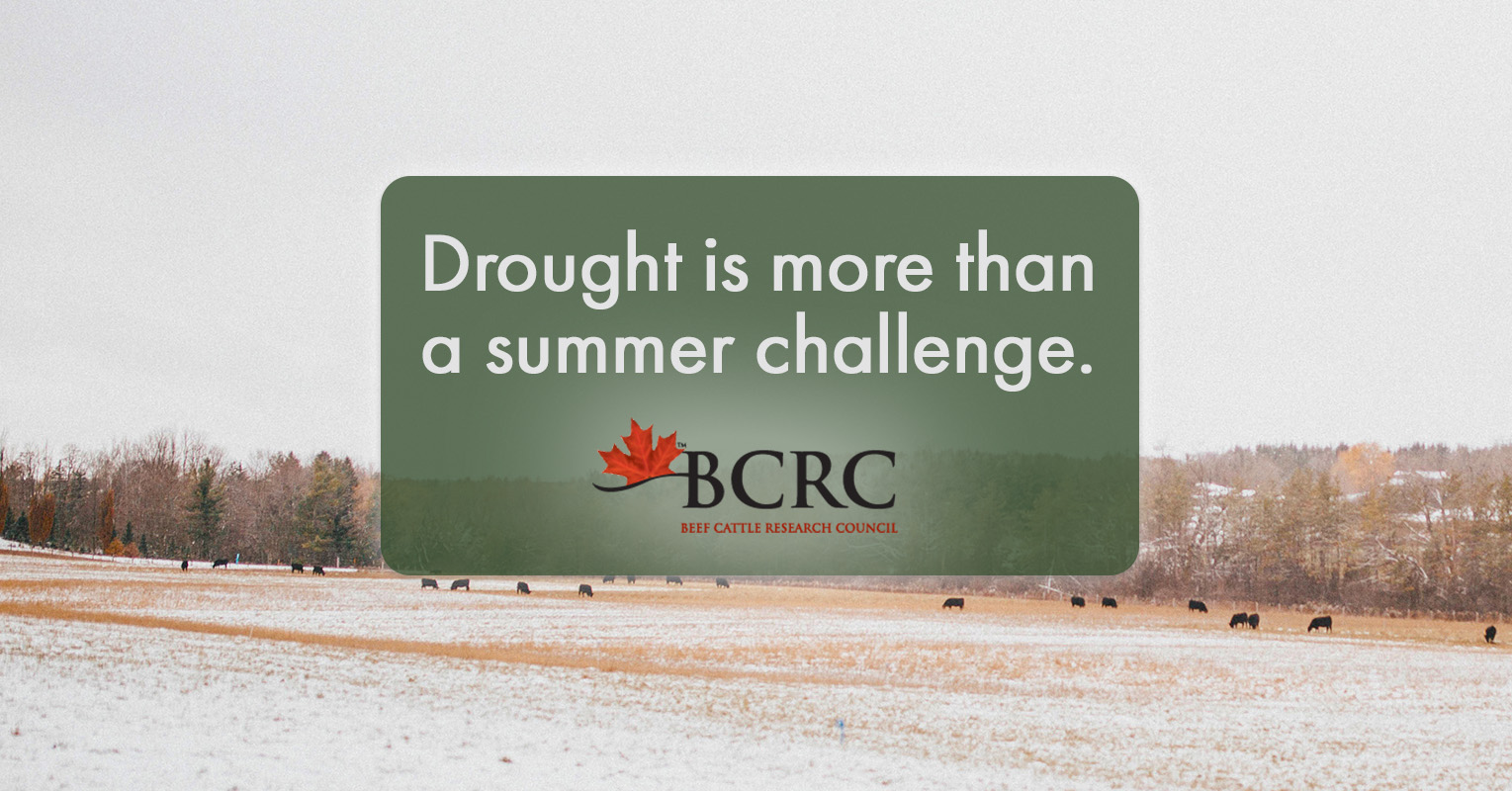
The challenge when confronted with drought and deciding whether to provide supplemental feed to animals on pasture is the use of resources which might normally be allocated to the winter-feeding period, resulting in simply deferring a feed shortage to a few months down the road. If resources, both physical and financial are limiting, reducing animal numbers may be necessary.
Herd Management
Often the best alternative for drought management is to reduce total forage requirements. Decreasing stocking rates during drought provides benefits in terms of improved animal performance, reduced supplemental and winter-feeding costs, minimized damage to pastures, and enhanced recovery following drought3.
It is important to have a drought plan in place that identifies which group or class of livestock will be de-stocked first, if necessary. Reducing livestock numbers to match available forage supply may include:
- sending animals to rented pastures in other locations where moisture and forage production has not been impacted by drought;
- calves and/or cows may be removed from pasture and fed conserved forages, crop residues and/or grain in confinement (known as drylotting);
- yearlings may be marketed earlier than originally planned;
- calves may be weaned early. Dry cows can then be maintained on lower quality pastures or with supplemental feed sources;
- consider limiting retention of replacement heifers;
- the cow herd may be culled earlier and more heavily than normal including less productive cows, late calvers, poor temperament, and older cattle.
| Decreasing animal numbers during a drought results in reduced forage requirements and: |
|---|
| improves animal performance |
| reduces feed costs |
| minimizes pasture damage |
| enhances recovery following drought |
Establish at what point each group of animals will be removed from pastures if the drought persists. Having flexibility in the herd will allow for greater ease in reducing stocking rates when the threat of drought becomes evident.
Although making the decision to cull can be a difficult one it is much better to cull or purchase feed than to allow cows to lose body condition. This can result in long term issues arising from drought. Visit this blog post about Keeping Todays Drought from Becoming Tomorrows Problem to learn more about preventing future impacts of drought.
If animal body condition is affected by limited forage supplies, the cow’s ability to breed on time will be impaired. When cows do not get adequate nutrition, either before or after calving, they may respond by missing one or more estrus period resulting in a later calving date or end up open. It is also important to monitor bull condition throughout the breeding season.
Read the BCRC post, Stretching Feed Supplies, to learn more about the impact of animal management decisions on reproductive and economic performance of the cow herd.
The Managing Drought video developed by the Foothills Forage and Grazing Association provides an excellent overview of strategies that can be employed when preparing for and dealing with drought.
Toxic Plants and Other Toxin Risks
Toxic or poisonous plants are more likely to be grazed during dry years as forage sources become depleted and grazing animals search for plants to graze. Hungry animals become less selective in what they eat. To prevent animals from grazing these plants, it is important to monitor pastures or provide supplemental feed to ensure that animals are not lacking forage and choosing species that may be dangerous.
If cattle have access to riparian areas, toxic plants such as seaside arrow grass can become a problem as cattle will gravitate towards these lusher, greener parts of the pasture.
Some plants produce a toxin themselves, while in others the toxin is produced by microorganisms growing on or inside the plant4.
Just a few examples of the numerous plants that can cause poisoning to livestock include:
native species such as:
– chokecherry
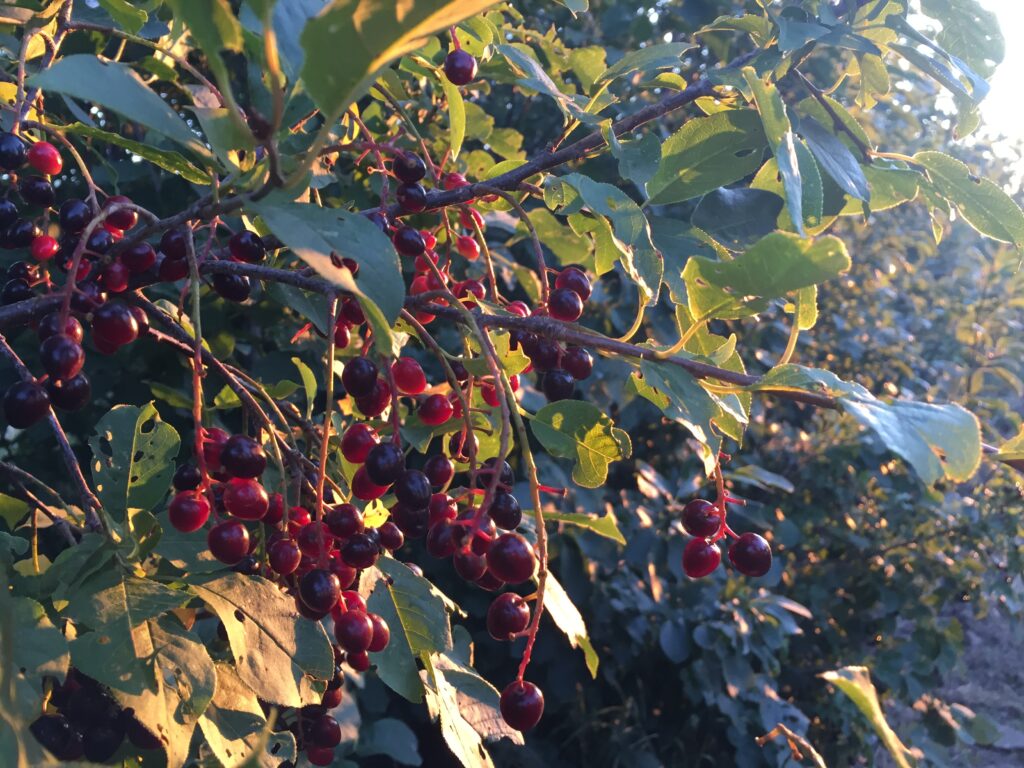
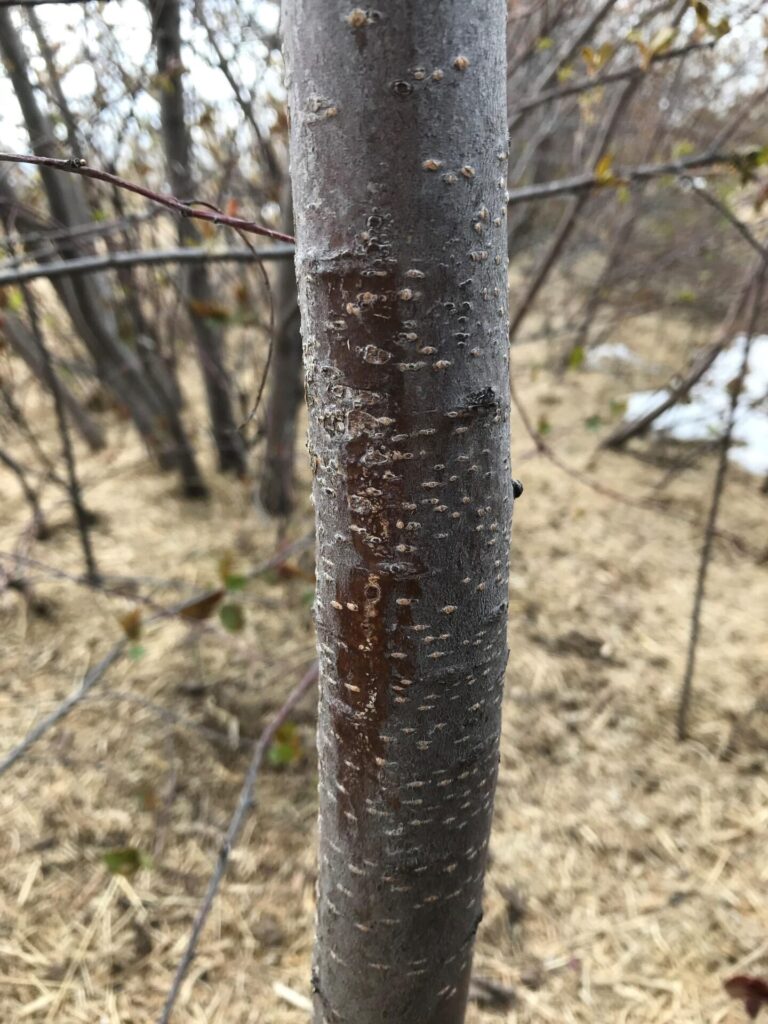
– tall larkspur
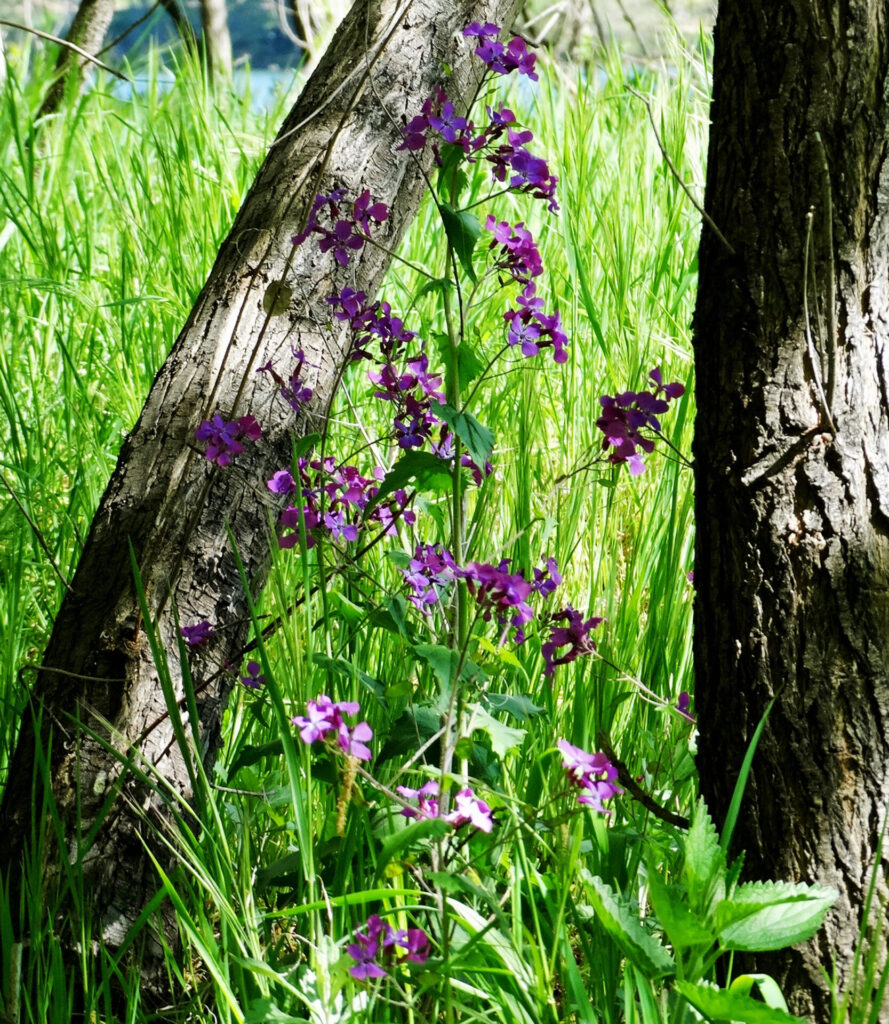
– locoweed
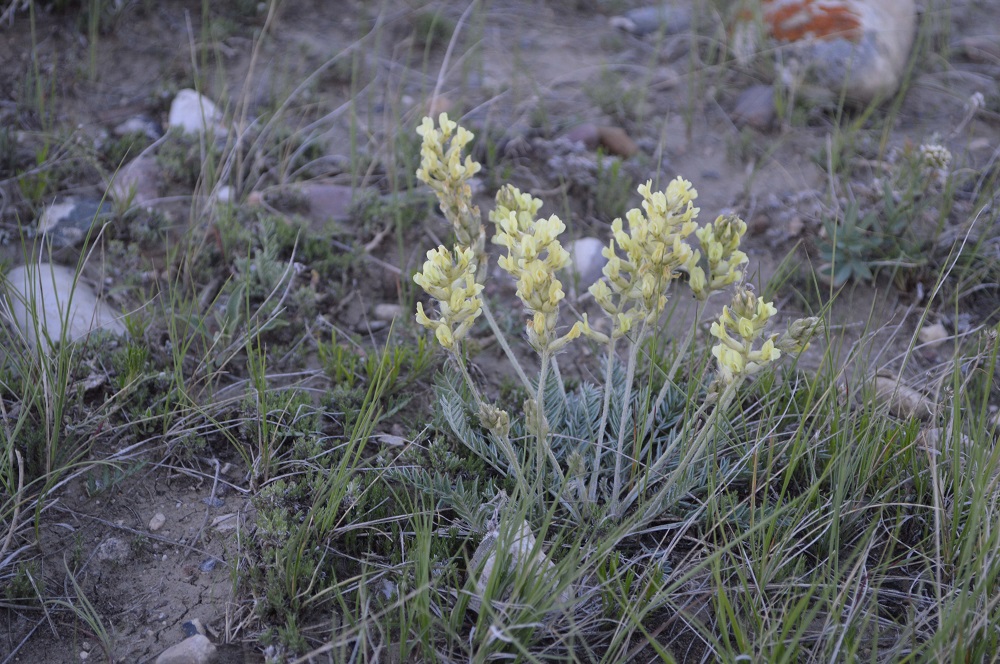
as well as introduced weeds including:

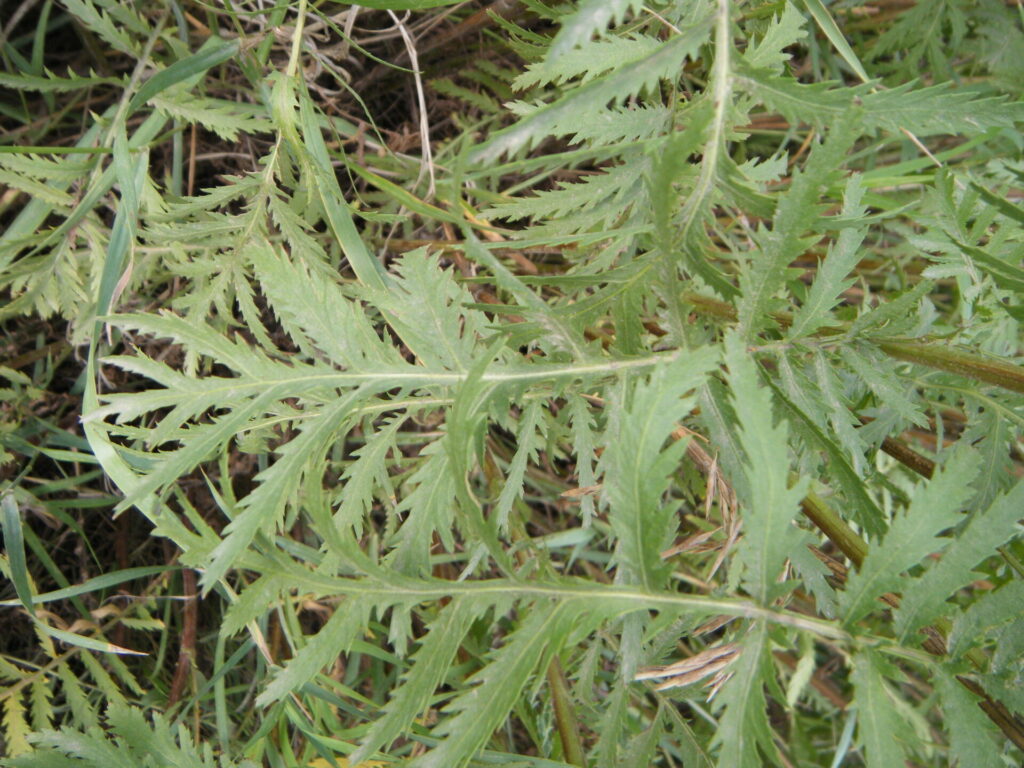
– stinkweed
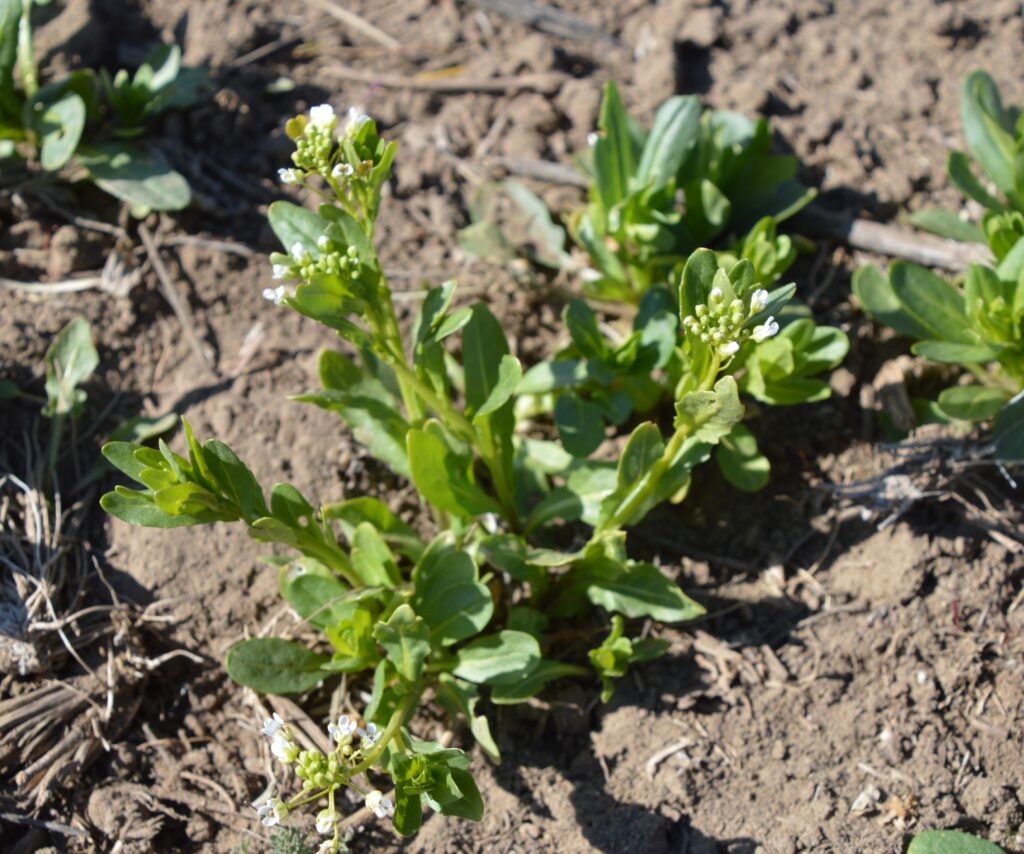
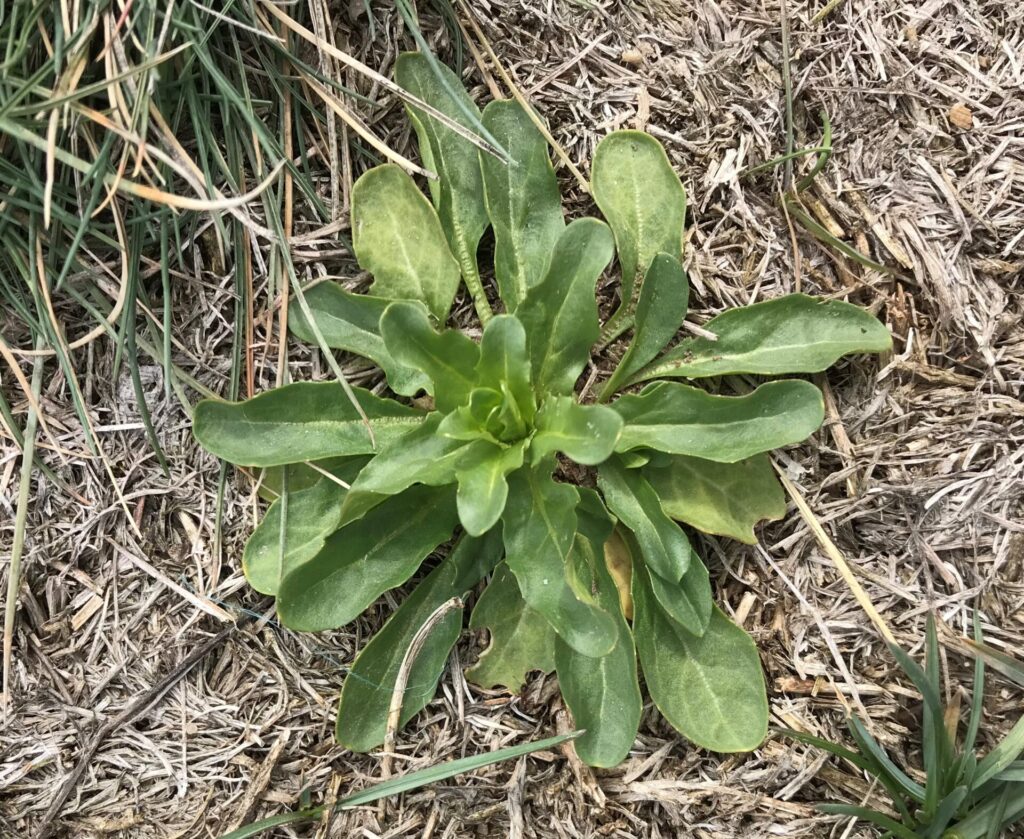
An in-depth overview of plants that most frequently cause poisoning and injury to livestock in Western Canada is provided in the publication, Stock-poisoning Plants of Western Canada.
Stressed plants are more prone to accumulate high levels of toxic compounds such as nitrates or prussic acid. Under drought conditions, plants reduce or stop growth which can cause plant nitrates to accumulate to an unsafe level. Nitrate levels greater than approximately 0.5% Nitrate (NO3) can be dangerous for animals. Annuals such as barley, oat, wheat, corn, and canola tend to accumulate greater amounts of nitrates than perennial forages while legumes do not generally accumulate nitrates. Prussic acid toxicity is caused by hydrogen cyanide (HCN) production in some plants including some varieties of birdsfoot trefoil, flax, sorghum-sudan grass, millets and chokecherry. Drought-stunted plants accumulate hydrogen cyanide and can possess toxic levels at maturity.
Water Sources
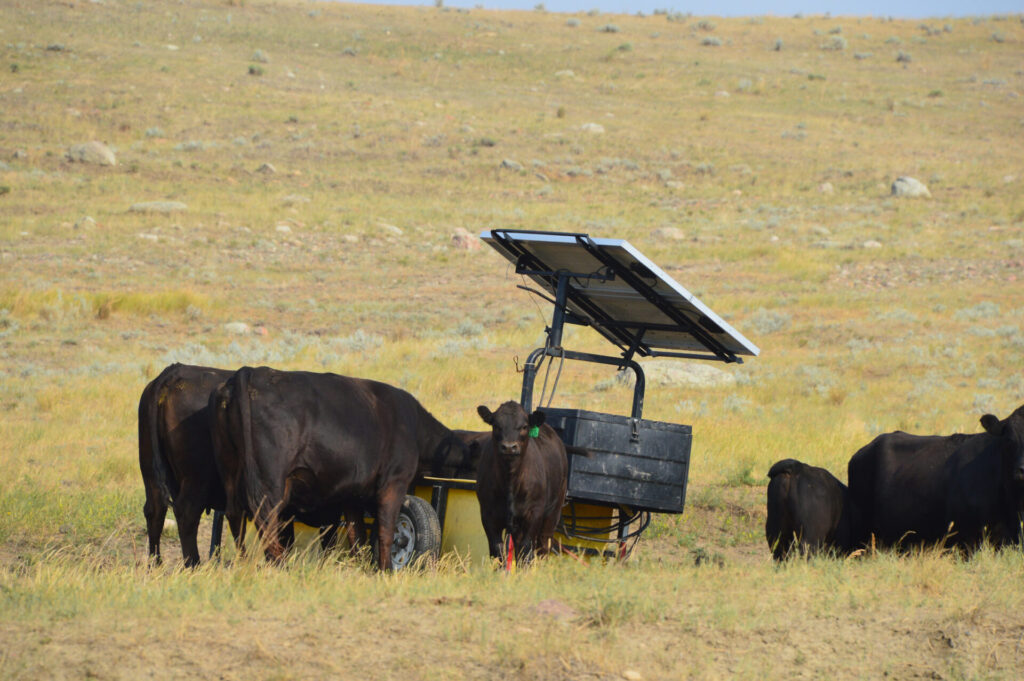
Sources of water for grazing animals can quickly become limited or unavailable during drought periods. From a proactive management perspective, it is recommended that any pastures that could possibly run out of water be grazed first. In some cases, and where possible, it may become necessary to use a portable stockwater supply in order to continue grazing a forage source where water has become limiting.
Fencing off water sources and pumping to a remote site, such as troughs, will improve water quality and reduce water losses that occur when livestock have access to non-fenced sources. More information on the use of water systems is available in the BCRC post, How Quickly Do Water Systems Pay for Themselves? Plus, view the water system calculator to estimate the potential economic benefits and costs of alternative watering systems compared to direct access to dugout water.
Water quality is an extremely important aspect of livestock management and is more likely to become compromised during periods of drought. Concentrations of total dissolved solids, sulphates and nitrates in both well and surface water may increase, mainly due to increased evaporation and decreased rainfall to recharge sources5. Because increased concentrations of minerals and contaminants can negatively affect grazing performance and potentially lead to death at high enough levels, water testing is recommended. Producers must also be aware of the risks of cyanotoxins produced by blue-green algae (algal blooms) on standing water during hot summer months, which can cause sudden death when ingested. Treatment of the water source or limiting access to algae-affected standing water sources is often the best solution, when possible.
The following two BCRC posts include information on why and how to test water, where to send samples, and how to interpret results:
The BCRC webinar, What’s in your Water? Water Quality and Economics of Pump Systems, is an excellent resource providing details on testing water and preventing animal health issues.
Riparian areas provide both forage and water during a drought. As preferred grazing areas, they need to be managed carefully to prevent overgrazing, maintain vegetative cover, prevent trampling and soil erosion and conserve water quality. Offsite watering or limited access watering on a critical watershed is an important management tool for these critical areas6.
Winter Feeding After a Drought
Because feed supplies are limited during a drought the summer’s lack of moisture can result in issues in the fall and winter. When planning for winter feeding after a drought year recognize that cattle may have to go out on winter grazing pastures sooner than intended meaning a back up plan is needed for what will happen when cattle are out of feed. Impaction and pneumonia can also become issues following drought years.
This article goes into more detail on the issues mentioned above and other winter feeding risks associated with drought.
Preparing for a Drought Before it Happens
Drought management strategies should be a permanent part of every grazing plan – you can’t plan for a drought once you are in the middle of it.
Despite the fact that drought is a relatively common occurrence in many regions, too often management plans are based on ideal growing conditions. This approach magnifies problems when drought does occur. Drought management strategies should be a permanent part of every grazing plan – you can’t plan for a drought once you are in the middle of it.
The way that pastures are managed in the good years determines how plants respond when drought stress happens7. Plants with healthy, deep root systems have the ability to reach subsurface moisture while plants with shallow, depleted root systems will be affected by dry conditions much sooner. The accumulation of litter in a pasture begins well before a drought occurs and as mentioned previously, leaving plant material behind is a valuable investment for future dry years as a way to decrease soil temperatures, reduce evaporation and provide shade and insulation.
Implementing good grazing management practices that focus on plant health will help to minimize the effects of future drought conditions7. Stocking rate, rest periods, individual plant species and their specific response to grazing, and level of utilization all play a part in the ability of forage stands to withstand a drought. Detailed planning considers all of the above and prepares for the occurrence of drought.
Examples of long-term management decisions may include:
- a rested pasture with adequate carryover in your grazing rotation to provide a forage reserve during drought
- having the flexibility to vary stocking rate with forage supply (grazing yearlings, access to annual forages) is also a useful drought preparation tactic3
- stockpiling sufficient feed supplies during years of surplus
Remember to protect riparian areas and develop watering systems that consider the possibility of water shortages or fluctuations in quality. Development of drought-proofed grazing systems includes water sources in tandem with forage supply.
When the Drought Finally Ends
Pasture shouldn’t be restocked before having a chance to recover following the end of a drought. Just as under more normal conditions, the key to maintaining plant health is providing adequate rest. Particularly if pastures were pushed harder than would usually occur, it will be important to monitor recovery in order to determine how soon grazing can or should happen again.
Learning and gaining experience will happen each time a drought occurs and using this information to refine management plans and make the necessary adjustments will lead to better preparation for the next event. Planning and flexibility is key.
Economic Factors
The bottom line is that drought causes economic challenges for producers and all management decisions must be centered on the financial implications of those choices, both in the immediate and long-term. For example, as drought extends over time, supplemental feed costs historically increase, and cattle prices are more likely to decline. Any additional costs, such as renting pasture or water developments, are an investment however calculating the return on those drought mitigation investments is essential. Producers need to balance providing for the needs of their animals when pasture and feed supplies are lacking while keeping production costs manageable.
The following resources discuss additional financial and associated factors to consider:
Don’t Let Winter Feed Costs Stall Your Herd’s Reproductive Momentum
Pregnancy Detection – Economics of Pregnancy Testing Beef Cattle Model
Rebuilding With Homegrown Heifers Versus Purchasing Breeding Stock
- References
-
1 Agriculture and Agri-Food Canada. 2016. Rangeland Management During Drought. 2 Saskatchewan Agriculture. Brassica Crops for Hay and Silage. 3 Sedivec, K.K., C. Prosser, J. Printz, and A. Kammer. 2017. Strategies for Managing Drought in Northern Plains. North Dakota State University Extension Service. 4 Majak, W., B.M. Brooke, and R.T. Ogilvie. 2008. Stock-poisoning Plants of Western Canada. Agriculture and Agri-Food Canada. 5 Deep, A. and B. Wiese. 2015. Large animal nutrition during drought conditions. Saskatchewan Veterinary Medical Association, Animal Welfare Committee. 6 Government of Alberta. 2012. Range Management during a Drought. 7 Manske, L.L., A.M. Krause, and T.C. Jirik. Pasture recovery from drought depends on previous management. North Dakota State University, Dickinson Research Extension Center.
Feedback
Feedback and questions on the content of this page are welcome. Please e-mail us at info@beefresearch.ca.
Expert Review
This content was last reviewed August 2021.
This content was last reviewed September 2023.